The Balkan Peninsula is a region of immense historical, cultural, and natural value. There are various natural attractions unique in the region, phenomenal historic cities, ancient burial sites, and incredible architecture. Dozens of them are protected as Balkans UNESCO World Heritage Sites.
This article tackles all the UNESCO World Heritage Sites in the Balkans, specifically those in Slovenia, Croatia, Bosnia and Herzegovina, and Montenegro. If you like checking things off a list while traveling, this should be your go-to list. There are dozens of Balkan World Heritage Sites, but the number of individual sites is much higher (as some sites consist of multiple locations).
Skip Ahead To My Advice Here!
Slovenia – 4 UNESCO World Heritage Sites
Škocjan Caves
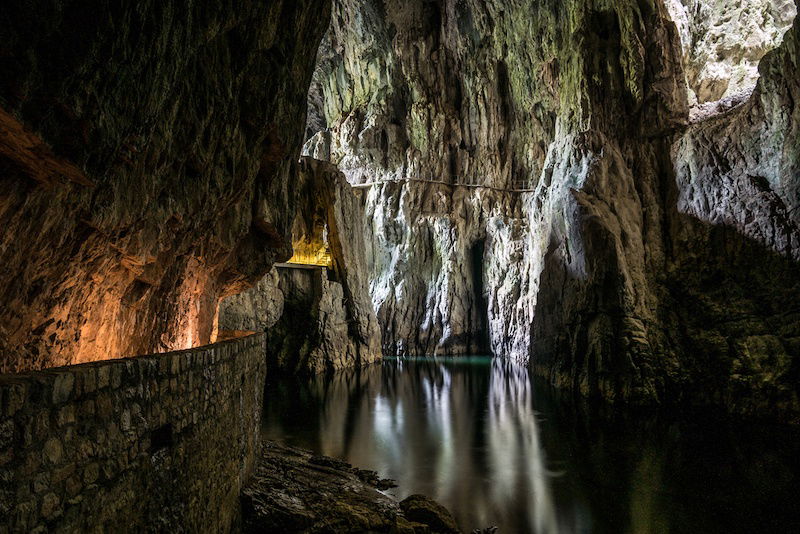
Located in Slovenia’s Karst region, the Škocjan Caves are among the most impressive natural attractions in this part of Europe. It’s an extraordinary system of underground rivers and waterfalls, collapsed dolines, and subterranean chambers, including one of the largest known cave canyons on earth.
The caves have been designated World Heritage because of their exceptional geological features. This is the very area where geological terms like “karst” and “doline” originated. As far as natural Balkans UNESCO World Heritage Sites go, these majestic caves are one of the most impressive.
Heritage Of Mercury In Idrija
This UNESCO World Heritage Site comprises the mining sites of Almaden in Spain and Idrija in Slovenia. Idrija became an important mining site when mercury was discovered in the area in 1490. The current site includes miners’ living quarters, mercury stores, mining infrastructure, and a miners’ theater. Until recently, an active mine used to be one of the world’s largest mercury mines.
Pile Dwellings In Ig
The UNESCO World Heritage Site “Prehistoric Pile dwellings around the Alps” encompasses no fewer than 111 individual sites spread across all Alpine countries. Two of them are located in Slovenia—two separate locations in the town of Ig.
Pile dwellings were stilted settlements built on the edges of wetlands, rivers, and lakes around the Alps. They date from 5,000 to 500 B.C. All settlements included in this UNESCO site are well-preserved and offer an intriguing insight into Central Europe’s prehistoric life.
Ancient And Primeval Beech Forests Of The Carpathians And Other Regions Of Europe
Spread across twelve different European countries, this UNESCO World Heritage Site protects dozens of woodland areas dominating Europe’s stunning beech forests. In Slovenia, you’ll find UNESCO-protected ancient and primeval beech forests in Krokar and Snežnik-Ždrocle.
Croatia – 10 UNESCO World Heritage Sites
Palace Of Diocletian In Split
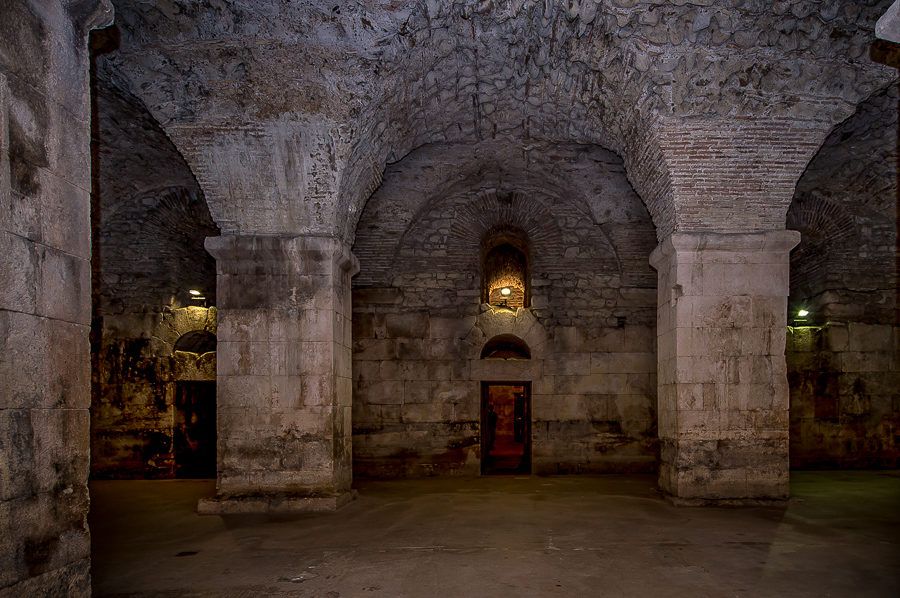
Split, Croatia’s second-largest city, is home to the ruins of the Palace of Diocletian. The city exists because of it. Diocletian’s Palace was built from the late-3rd century to the early-4th century as a retirement place for the Roman Emperor Diocletian. The city of Split developed around it, first housing servants and people supporting the former emperor’s lifestyle, later an actual town.
The towering cathedral was constructed in the Middle Ages with materials taken from the ancient mausoleum. Other structures in this protected site are medieval fortifications, 13th-century churches, 15th-century Gothic palaces, and various other buildings in other architectural styles. The Palace of Diocletian is still the beating heart of Split. Visiting is free as the site lies in the core of the old city and is dotted with bars and restaurants, shops, and museums.
Stari Grad Plain

The Stari Grad Plain on the island of Hvar is a uniquely well-preserved agriculture landscape created by Greek colonists in the 4th century B.C. Still, in use to this very day—the landscape is dominated by wineries and olive groves—the plain still looks exactly as it did thousands of years ago. The stone walls and stone shelters bear the same layout as when the Greeks cultivated the plain 24 centuries ago.
Episcopal Complex Of The Euphrasian Basilica In The Historic Center Of Poreč

The small coastal town of Poreč in Istria became Christianized in the 4th century, one of the world’s first Christian towns. Comprising the atrium, episcopal palace, baptistery, and Basilica, this UNESCO World Heritage Site protects a collection of religious monuments and buildings dating from that time. It is the most complete surviving complex of its type and one of the world’s greatest examples of early Byzantine architecture and art.
Historical City Of Trogir

Boasting an exceptionally rich culture, Trogir has reaped the advantages of centuries of foreign rule—from the Greeks to the Romans to the Venetians. The city’s octagonal street layout dates from the Hellenistic period and was improved by successive rulers who added fortifications and gorgeous public buildings.
Nowadays, the historic city of Trogir is the best-preserved Romanesque-Gothic town in all of Central and Southeastern Europe. The absolute highlight is the city’s medieval heart, surrounded by fortified walls and home to a castle, old houses, and a variety of palaces in Romanesque, Gothic, Renaissance, and Baroque styles.
Old City Of Dubrovnik
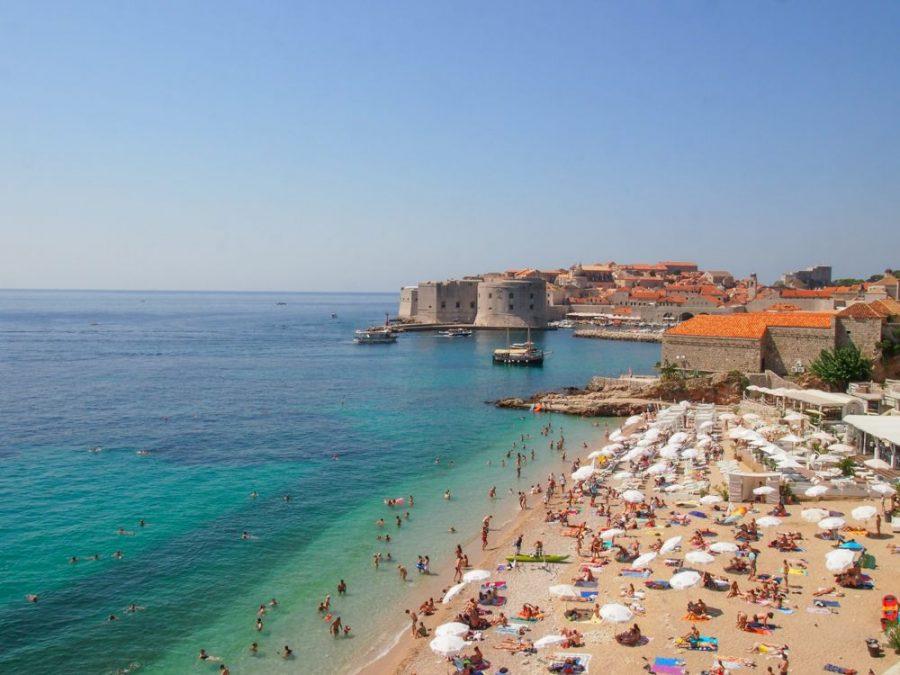
Nicknamed “the Pearl of the Adriatic,” Dubrovnik is a major tourist destination in the Adriatic. Located on the Dalmatian coast, this ancient city became a Mediterranean power in the 13th century and remained an independent republic—known as Ragusa—for a couple of centuries. It was the only city-state that could match Venice in terms of marine and trade power.
One of the greatest and most famous Balkans UNESCO World Heritage Sites, the Old City of Dubrovnik, is an exceptionally well-preserved town, made up of terra-cotta roofs, religious buildings, cobbled streets, and massive, iconic city walls. Nowadays, it’s a hugely popular attraction, a cruise ship destination that draws thousands of visitors on any given summer’s day, and a place to use as a base to take day trips around the area.
Plitvice Lakes National Park
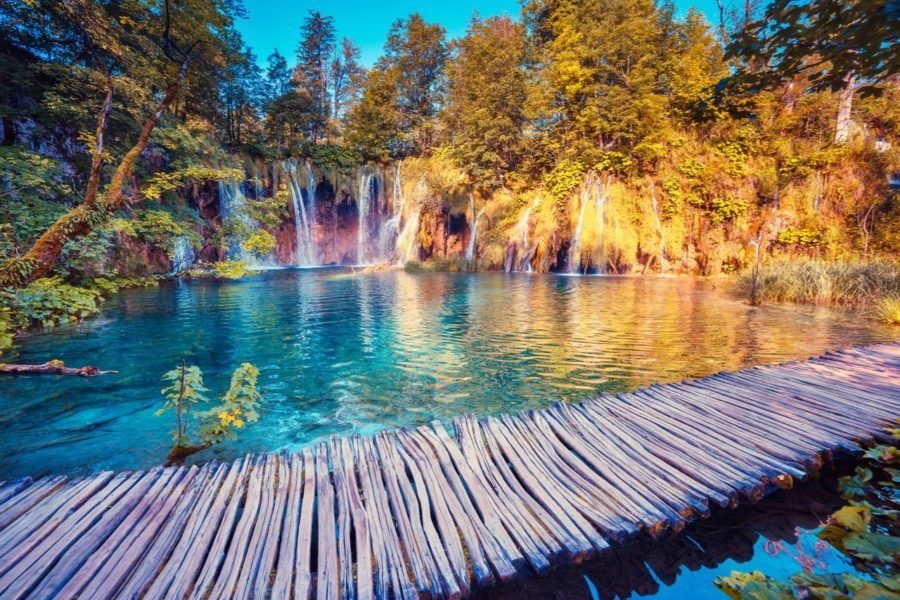
One of the most remarkable national parks in Europe, Plitvice Lakes National Park is renowned for its terraced lakes and countless waterfalls. Over a period of thousands of years, water flowing over chalk and limestone rocks has built so-called travertine dams, which blocked the flow and created lakes.
This unique landscape features crystal-clear lakes, forest-covered hills, amazing hiking trails, and an abundance of wildlife, including wolves, brown bears, and a large number of species of birds. This is the largest national park in Croatia and, established in 1949, one of the oldest in Europe and you should stay here for a few days to really appreciate it.
It’s among the star attractions in Croatia, visited by more than a million tourists each year, and one of the top UNESCO World Heritage Sites in the Balkans.
Cathedral Of St. James In Šibenik
Built between 1431 and 1535, the massive Cathedral of St. James in Šibenik results from an exchange of architectural influences between Tuscany, Northern Italy, and Dalmatia in the early Renaissance.
It was built under the supervision of three successive architects and is made entirely of stone. It is, in fact, said that this is the world’s largest building constructed with only stone. An absolutely monumental structure, the Cathedral of St. James, is a triple-nave basilica with a dome and three apses. Notable features include the 71 sculptured faces of people—men, women, and children—on the outside. Also, the building is unique in the sense that its exterior perfectly reflects the way it looks on the inside.
Stećci Medieval Tombstones Graveyards
This is one of the serial UNESCO World Heritage Sites in the Balkans, a site that’s made up of 28 different, smaller sites spread across southern Croatia, Bosnia-Herzegovina, western Serbia, and western Montenegro.
The site protects the tombstones, known as stećci, that dot the region — laid out in rows, according to the customs in medieval Europe, these cemeteries date from the 1100s to the 1500s. Made from limestone, the tombstones feature various inscriptions, decorative carvings, and motifs. In Croatia, you can find stećci in two places—Cista Velika and Konavle.
Venetian Works Of Defense Between The 16th And 17th Centuries
This fascinating UNESCO World Heritage site consists of six different locations in the Adriatic, from Italy’s Lombard region to the eastern Adriatic coast. Two of them are in Croatia: the Defensive System of Zadar and the Fort of St. Nikola in Šibenik.
The Venetians erected these magnificent fortifications to protect their city-state against other European powers in the 1500s and 1600s. Their primary function was to keep the sea routes from Venice to the Mediterranean and the Levant open to the ships of the Venetians and their trade partners.
Ancient And Primeval Beech Forests Of The Carpathians And Other Regions Of Europe
The Croatian part of the expansive Ancient and Primeval Beech Forests of Europe UNESCO World Heritage Site consists of three different areas. One of them is at Hajdučki i Rožanski kukovi in the Mount Velebit area. The other two are both in Paklenica National Park, respectively, Oglavinovac-Javornik and Suva Draga-Klimenta.
Bosnia and Herzegovina – 3 UNESCO World Heritage Sites
Old Bridge Area In The Old City Of Mostar

In the city of Mostar, the Stari Most, or Old Bridge, is a star attraction on the entire Balkan Peninsula and one of the most photogenic Balkans UNESCO World Heritage Sites. This iconic 16th-century Ottoman bridge spans the River Neretva, connecting two different parts of this historic city. The bridge was destroyed during the Croat-Bosniak War, one of the many wars within the 1990s Balkan War, but it has been meticulously rebuilt.
The area around the Stari Most is of large cultural importance for its combination of Ottoman, Mediterranean, and Western European architecture. Mostar has been and continues to be a symbol of the coexistence of different cultural, religious, and ethnic groups as well as a model of international co-operation.
Mehmed Paša Sokolović Bridge In Višegrad
Constructed in the 16th century by the order of Grand Vizier Mehmed Paša Sokolović, this magnificent bridge is a prime example of Ottoman architecture and civil engineering. Designed by court architect Mimar Korca Sinan, an architectural masterpiece is made up of eleven masonry arches. It’s its unique elegance and monumental appearance that makes this bridge such a valued structure.
Stećci Medieval Tombstones Graveyards
Bosnia-Herzegovina is the country with, by far, the most stećci. There are twenty of them scattered across the nation. You can consult the official map by UNESCO for specific locations. Notable ones are found near Kakanj and Stolac. Some of the best-preserved are in the town of Srebrenica—there, you’ll find no fewer than 800 tombstones.
Montenegro – 4 UNESCO World Heritage Sites
Natural And Culturo-Historical Region Of Kotor
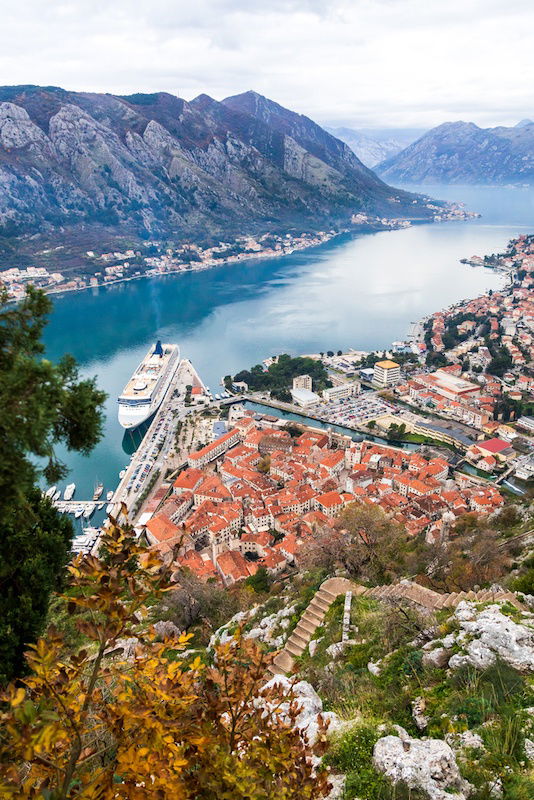
This extraordinary site encompasses the inner Bay of Kotor, the old town of Kotor, and the fortifications of Kotor. It’s one of Montenegro’s greatest attractions, a place deserving a spot on any itinerary in the Balkans.
The Kotor area is especially significant because of its natural, protected harbor, which made the towns inside the bay exceptionally prosperous. Kotor was an important commercial and artistic hub in the Middle Ages, renowned for its schools and imposing mansions.
Durmitor National Park

One of southeastern Europe’s wildest places, Durmitor National Park, protects a landscape formed by glaciers and traversed by wild rivers and underground streams.
It is bordered by deep canyons on three sides, including the Tara River canyon, which is the deepest canyon in Europe and one of the deepest in the world. Thick pine forests cover the slopes, offering a habitat for a wide variety of wildlife, while mountain lakes shimmer in valleys.
Stećci Medieval Tombstones Graveyards
Montenegro has three sites with medieval tombstones or stećci. There is one in Plužine, and two are located near Žabljak, the main gateway to Durmitor National Park, which allows you to hit two UNESCO World Heritage Sites at once.
Venetian Works Of Defense Between The 16th And 17th Centuries
A series of fortifications that stretches for 1,000 kilometers from the Lombard region in northern Italy to the east coast of the Adriatic, this UNESCO World Heritage Site comprises six separate sites. One of them is in Montenegro, where you can visit the UNESCO-protected Fortified City of Kotor. This site is different from the other UNESCO site in Kotor mentioned above, so you can hit two birds with one stone by visiting this gorgeous destination!
Brands We Use And Trust
Albania – 4 UNESCO World Heritage Sites
Butrint

A major archaeological site in Albania, Burtrint, has been home to humans since prehistoric times. It used to be the location of a Greek colony and was also a thriving Roman town. Later on, it was incorporated into the Byzantine Empire, became a part of Venice for a while, and was eventually abandoned sometime during the late Middle Ages.
Nowadays, a great collection of ruins remains, providing a look at each chapter in the town’s history. There are ancient Greek and Roman monuments, fortified walls, and an early-Christian baptistery, among many other structures.
Historic Centres Of Berat And Gjirokastra
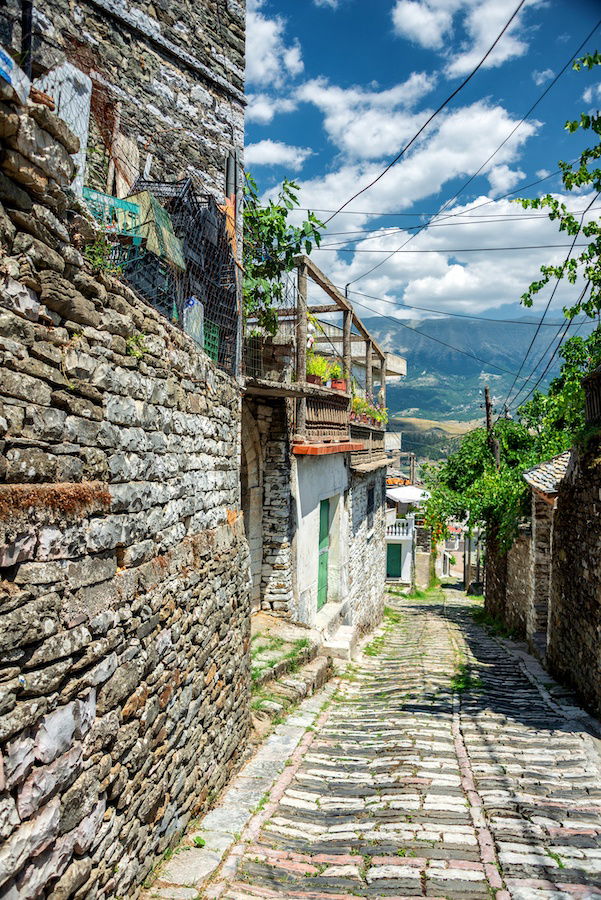
Located in southern Albania, Berat and Gjirokastra are two fortified cities that have been inhabited continuously since ancient times. They offer a deep insight into the evolution of everything from art and architecture to religion and culture in this part of Europe.
Berat is sometimes called “the city of a thousand windows” and is one of Albania’s greatest architectural gems. You’ll see influences from Illyrians, Greeks, Romans, Byzantines, and Ottomans—spanning the city’s entire lifetime. Landmark buildings range from castles and palaces to mosques and churches. There’s plenty to see and do, so find yourself a hotel, and explore for a few days!
Gjirokastra lies on the Drino River valley slope and overlooks an ancient landscape dotted with characteristic stone buildings. The town’s centerpiece is the 13th-century citadel, surrounded by several turreted houses dating from the 1600s, a typical architectural feature of this area.
Ancient And Primeval Beech Forests Of The Carpathians And Other Regions Of Europe
This huge World Heritage Site extends across the entire European continent, from Spain to Ukraine, from Belgium to Bulgaria. There are two places in Albania where you can enjoy the gorgeous woodland scenery in a typical European beech forest.
In the north of the country, on the border with Montenegro, lies Valbonë Valley, National Park. Not the entire park is part of this UNESCO World Heritage Site, though. If you’d like to focus on that particular part of the park, you must go to the Gashi River nature reserve.
The other, second place in Albania is Shebenik-Jabblanicë National Park. The part of that park that’s designated World Heritage is Rajca nature reserve.
Natural And Cultural Heritage Of The Ohrid Region
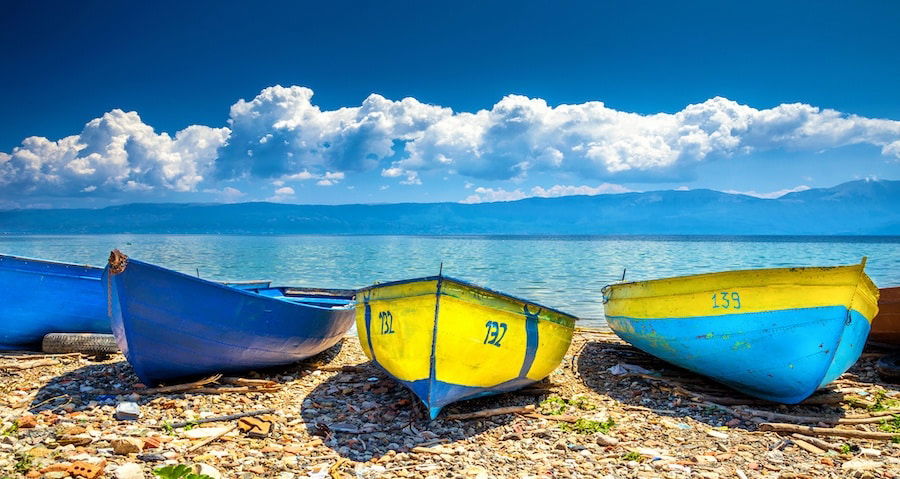
Extended to include the Albanian part of Lake Ohrid and its surroundings in 2019, the Natural and Cultural Heritage of the Ohrid Region site is the fourth UNESCO World Heritage Site in Albania. Specifically, this Albania UNESCO site encompasses the part of Lake Ohrid located in Albania, the Lin Peninsula, and the small part of land connecting that peninsula to the border with Macedonia.
The Lin Peninsula is particularly significant because it’s the location of a 6th-century early-Christian church. Additionally, three sites situated in the shallow waters near the lakeshore contain evidence of prehistoric dwellings as well.
Just as is the case of the North Macedonian part of this UNESCO World Heritage Site in the Balkans (see below), the Albanian part combines cultural and archaeological heritage and important natural features. It’s an exceptionally rich environment in terms of flora and fauna—no fewer than 200 endemic species live in Lake Ohrid.
North Macedonia – 1 UNESCO World Heritage Site
Natural And Cultural Heritage Of The Ohrid Region
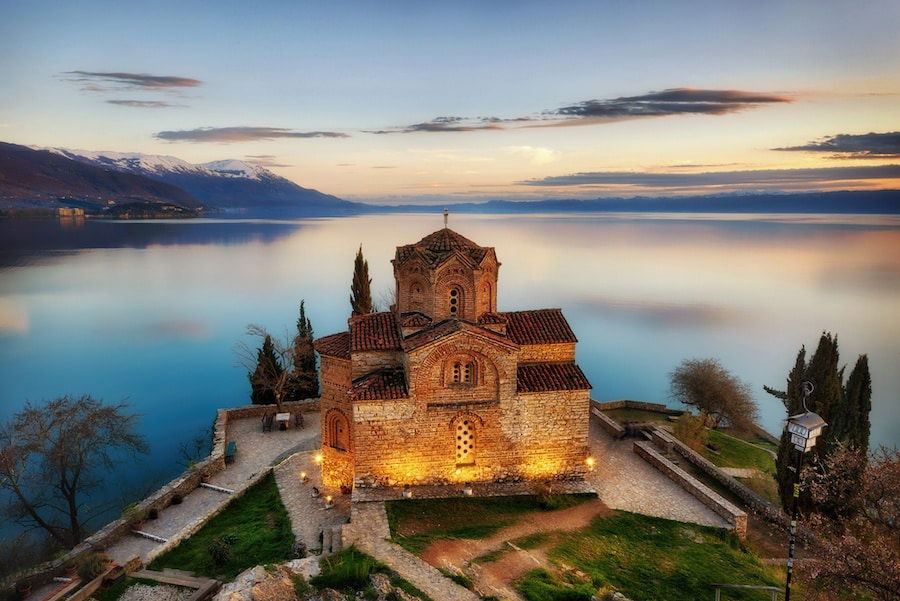
North Macedonia’s only UNESCO World Heritage Site is not one that you’ll want to ignore. This site is extraordinary because it was inscribed for both its natural and cultural value. There are only 27 other similar sites in the world. Lake Ohrid is an ancient lake, created about two to three million years ago and is home to more than 200 endemic freshwater species—both fauna and flora.
The town of Ohrid, set on the lake’s shore, is old as well. In fact, this is one of the oldest settlements anywhere in Europe. Archaeological artifacts found there span a period from the Bronze Age through the Middle Ages. The structures in its old center date from the 7th to the 19th century, also offering a superb insight into the evolution of architecture and art in the region.
Bulgaria – 10 UNESCO World Heritage Sites
Boyana Church
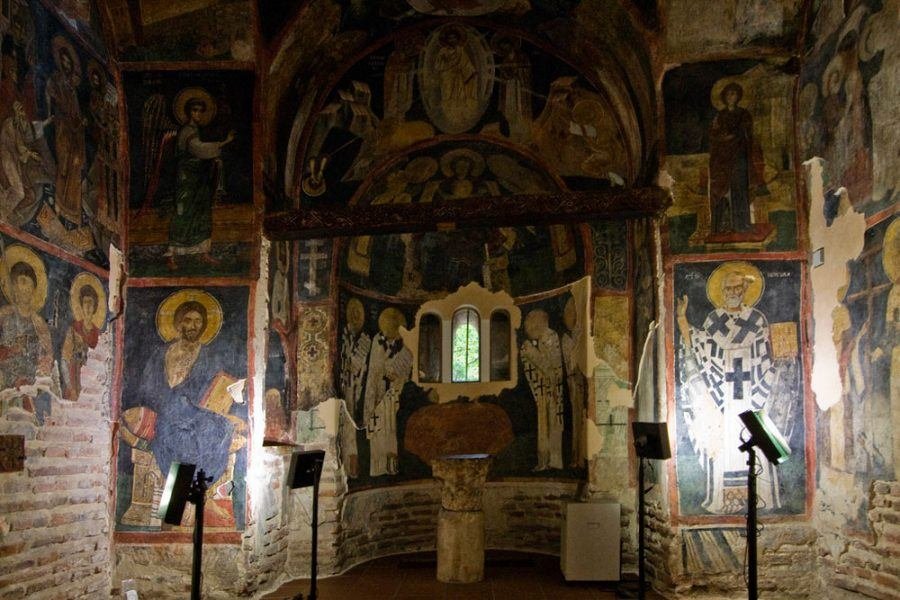
Its oldest part dating from the late 900s or early 1000s, the Boyana Church just outside of Sofia is made up of three main buildings. Its eastern church is the oldest part, while the second two-floor building was constructed in the 13th century—the third church of the complex dates from the early 1800s.
What makes the Boyana Church such a valued historical complex is its layers of wall paintings in its interior. These works of art span a period between the 11th and the 19th centuries, offering a detailed and unique insight into the skills, subjects, and styles of different periods in time.
Madara Rider
The Madara Rider is a spectacular example of medieval rock art in Europe. In fact, it is the only one of its kind on the entire continent. Situated near the village of Madara on the Madara Plateau, it’s a 23-meter-high rock relief carved into a cliff that rises 100 meters from the ground.
The relief depicts a mounted knight who triumphs over a lion and dates from the early 8th century when the Bulgars settled in the region, and the state of Bulgaria was born. The inscriptions surrounding the relief tell us about important events in that period of time, including tales of famous Khans.
Thracian Tomb Of Kazanlak
Named after its nearest town, the Thracian Tomb of Kazanlak dates back to the Hellenistic period in the late-4th century B.C. The tomb lies close to Seutopolis, which was the capital of Thracian King Seutes III, and is part of a much larger necropolis.
The structure itself has a beehive shape and was included in UNESCO’s World Heritage list because of its unique aesthetic and phenomenal art. The interior murals feature people and horses and are the best-preserved artworks from the Hellenistic period in Bulgaria. The Thracian Tomb of Kazanlak is the only monument of its kind in the entire world.
Thracian Tomb Of Sveshtari
Another ancient tomb in Bulgaria, this Thracian tomb, lies near Sveshtari village. It dates from the 3rd century B.C. and is a prime example of the architectural skills and principles of the Thracian culture. It’s one of the most significant remaining Thracian cult buildings, both because of how rare they actually are and because of how well-preserved it is.
Its interior boasts ten sculptures of female figures carved high in the walls of the main chamber. Another highlight is the decoration of the lunette in the vault. Both are the only known examples of their kind in what used to be Thracia, extraordinary reminders of the Getes’ culture in this region.
Ancient City Of Nessebar
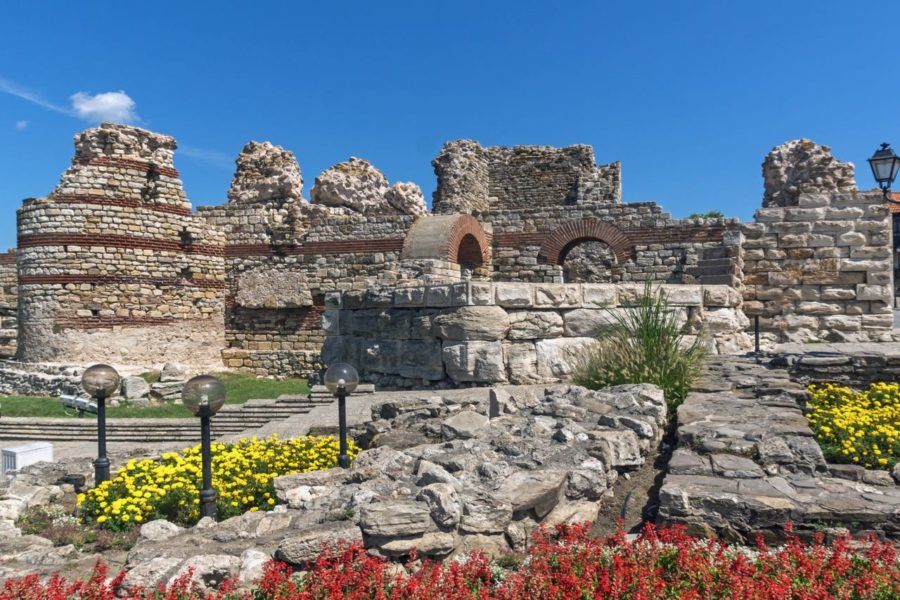
The Ancient City of Nessebar is more than three millennia-old and occupies a peninsula on the Black Sea coast of eastern Bulgaria. The city became a Greek colony in the 6th century B.C., and most of its current remains date from that Hellenistic period. Those remains include such great landmarks as Apollo’s temple, the Acropolis, a Thracian fortified wall, and an agora.
Other monuments in this glorious city are much younger, such as the Byzantine fortress and the Stara Mitropolia Basilica, which both date from the Middle Ages. This city was once the major port on the frontier of more than one empire, but the wonderful thing about it is that it’s still very much alive. It is a premier resort town on the Bulgarian Black Sea coast, offering you the opportunity to explore millennia of human history and relax and enjoy the beautiful natural scenery.
Pirin National Park
Pirin National Park is one of the Balkans UNESCO World Heritage Sites because of its outstanding natural beauty, glacial geomorphology, and enormous biodiversity. These rugged mountain landscapes consist of more than 70 glacial lakes, countless waterfalls, many caves, small glaciers, and coniferous forests. The Baikushev pine, the oldest tree in Bulgaria, estimated at 1,300 years old, is located in the park.
This is one of the most breathtaking natural places in this corner of Europe, a haven for outdoor enthusiasts and wildlife lovers. The park’s home to brown bears, gray wolves, chamois, golden eagles, and more than 220 other vertebrate species.
Rock-Hewn Churches Of Ivanovo
Many UNESCO World Heritage Sites in Bulgaria are ancient religious buildings or sites, and this is no exception. The Rock-Hewn Churches of Ivanovo are a collection of churches, monasteries, and chapels chiseled into solid rock on the cliff banks along the Rusenski Lom River.
Dating from the 1100s and built by hermit monks, the complex is nothing like Bulgaria’s other historic groups of buildings. Besides their absolutely unique setting, the churches’ main claim to fame is their 13th- and 14th-century frescoes. They’re exceptional examples of Bulgarian medieval art and play an important role in the story of Christian art in Europe.
Rila Monastery
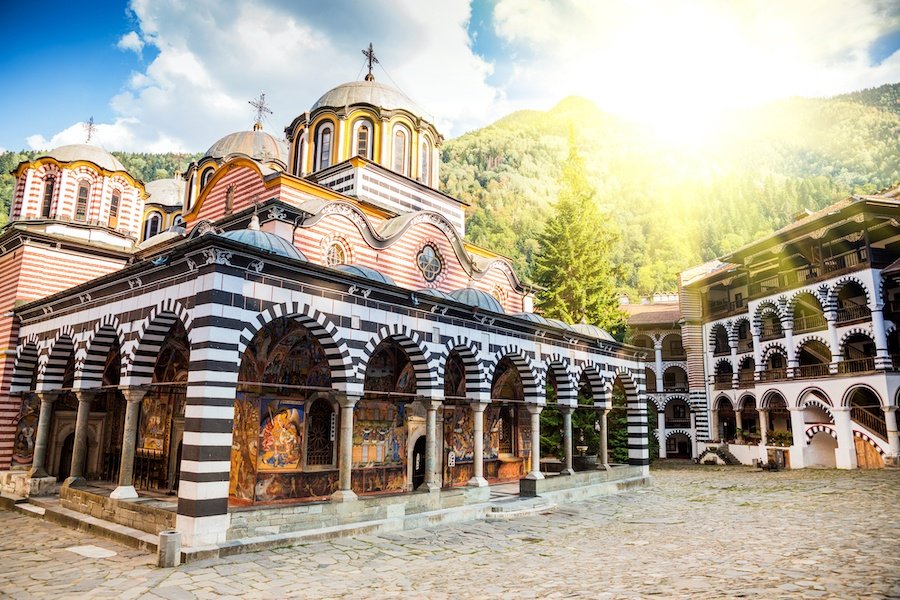
The Rila Mountains in the northwestern Rila region of Bulgaria is not just about hiking because located around 1147 meters altitude; you will find one of the most famous religious buildings around – the Rila Monastery.
This is one of the most visited sites in the country and is often visited as part of an organized day trip or as part of a hiking trip. The complex is packed with various buildings and looks like a protective fortress from the outside.
As you enter the stone walls, you will see several types of colorful architecture, which is unique to anything you will see anywhere else, as well as significant religious art types. The Hreliov’s Tower and The Nativity of The Virgin are two of the most famous parts of the compound, and the main church itself was built way back in 1343.
Whether you are at all religious or not, you can’t fail to be moved by the spirituality which oozes from the site itself, as well as the natural beauty which surrounds it. This is definitely one of the top Balkans UNESCO World Heritage Sites in Bulgaria and can easily be visited on a weekend city break and is included in many Bulgaria travel itineraries.
Srebarna Nature Reserve
In the far northeastern corner of Bulgaria lies Srebarna Nature Reserve. This freshwater lake lies near the Danube River and is a critically important area for many birds migrating between Europe and Africa. The reserve includes the lake, though, and the former farmlands to the north and a stretch of forests along the Danube.
It’s one of Europe’s prime bird-watching areas, offering nesting grounds to 99 species and a seasonal home to about 80 different migratory birds.
Ancient And Primeval Beech Forests Of The Carpathians And Other Regions Of Europe
In Bulgaria, you can experience and explore the iconic beech forests of Europe in Central Balkan National Park. Located in the heart of the country, in the central and higher parts of the Balkan Mountains, this national park is one of Europe’s largest and most significant protected areas.
The park is a collection of no fewer than nine different nature reserves and is home to an abundance of wildlife and many vulnerable ecosystems and communities.
Serbia – 4 UNESCO World Heritage Sites
Studenica Monastery

Established in 1190 by Stevan Nemanja, who founded the state of Serbia in the Middle Ages, the impressive Studenica Monastery is the grandest of all the Orthodox monasteries in the country. It is a fortified monastery, which was absolutely necessary during that time in European history, and has not one but two churches. Both the Church of the King and the Church of the Virgin was constructed with white marble and house invaluable collections of Byzantine art dating from the 1200s and 1300s.
Stari Ras And Sopoćani

All UNESCO World Heritage Sites in Serbia are historic, artificial structures, and so is the Stari Ras and Sopoćani complex. This is yet another group of gorgeous medieval buildings, a collection of fortresses, churches, fortified walls, monasteries, and other archaeological sites. Stari Ras—literally “Old Ras”—was the first capital city of Serbia, set at the crossroads of the Western and Byzantine worlds. Nowadays, all that remains are ruins, the outlines of the city walls, the lower town of Trgovište, and the hilltop fortress of Gradina. It’s a precious site because of its natural, artistic, historical, and cultural significance.
The Monastery of Sopoćani lies nearby and is home to some of the world’s finest Byzantine and Serbian medieval frescoes. They date from the late-13th century and were made by great Byzantine artists who weren’t able to work within the Byzantine Empire and were welcomed by the King of Serbia for one reason or another.
Stećci Medieval Tombstones Graveyards
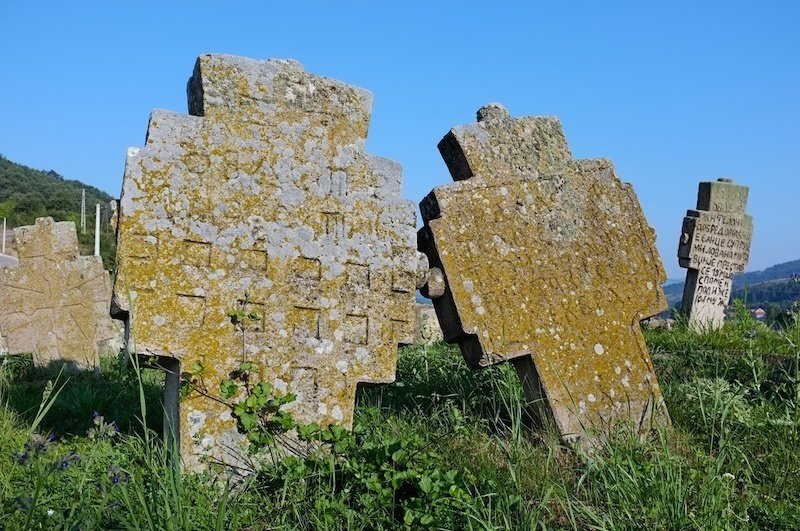
Serbia is home to three of the 28 UNESCO World Heritage-listed stećci in the Balkans. You can see these unique medieval tombstones in Hrta, Rastište, and Perućac. What sets them apart from other ancient graveyards in Europe is that all three medieval Christian faiths used them in the region.
The Catholic Church, Orthodox Church, and the Church of Bosnia, which no longer exists today, all used stećci for their burials. Additionally, it’s just the spectacular detail, variety, motifs, epigraphy, and reliefs of these thousands of tombstones that make them a sight worth seeing.
Gamzigrad-Romuliana, Palace Of Galerius

The complex used to be known as Felix Romuliana, named for the mother of the emperor. It’s a huge collection of various buildings, from temples and basilicas to bathhouses, fortifications, ceremonial venues, and a tetrapylon. The complex is part of Serbia’s Roman Emperors Route, linking seventeen Roman emperors’ birthplaces in modern-day Serbia.
Kosovo – 1 UNESCO World Heritage Site
Medieval Monuments In Kosovo
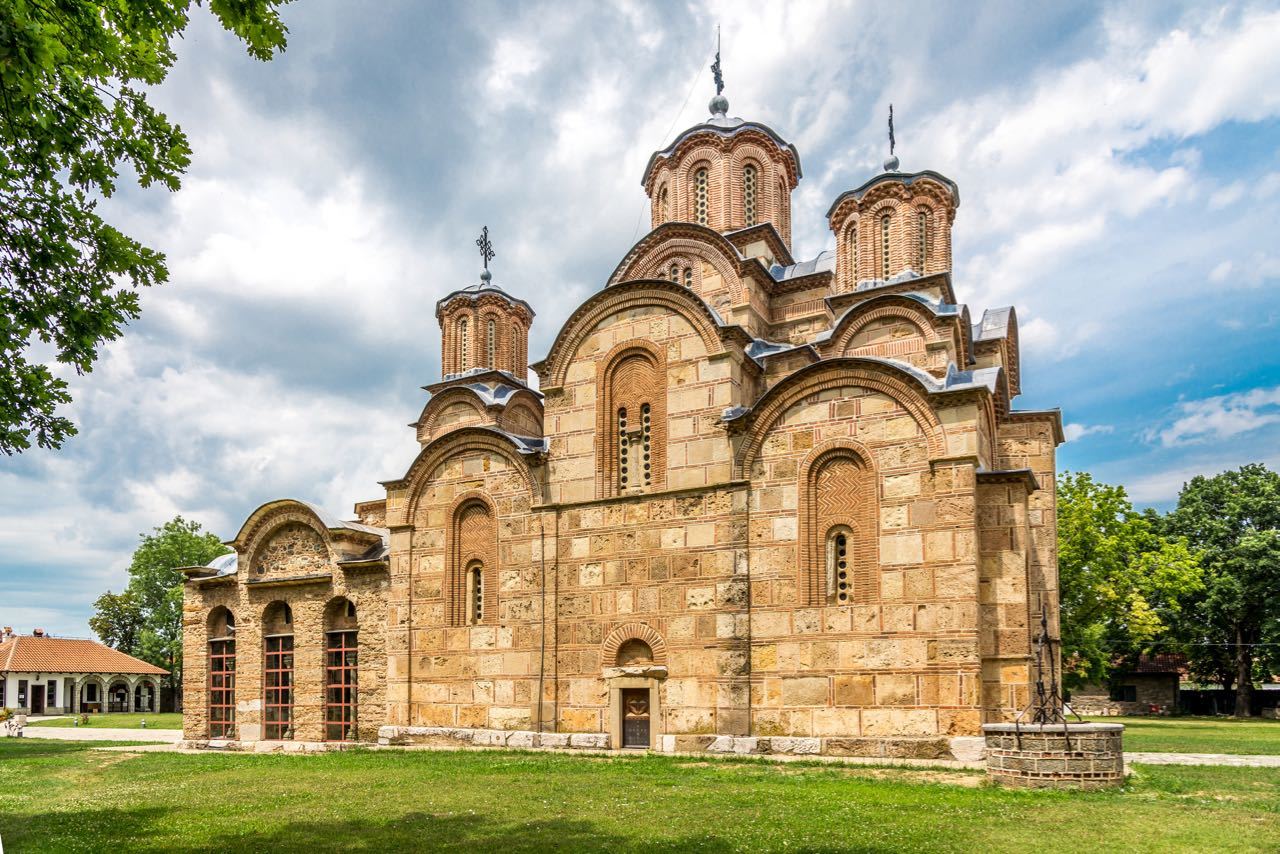
The Medieval Monuments in Kosovo consist of four historically significant Serbian Orthodox Christian churches and monasteries. They reflect the heyday of the Byzantine-Romanesque religious culture in the Middle Ages, famous for their beautiful frescoes and wall paintings and their overall extraordinary Byzantine-Romanesque ecclesiastical architecture.
Those four structures are the Dečani Monastery, the Church of the Holy Apostles, the Patriarchate of Peć Monastery, and the Church of the Holy Virgin of Ljevisa. They’re unquestionably among the top places to visit in Kosovo.
Romania – 8 UNESCO World Heritage Sites
Historic Center Of Sighișoara
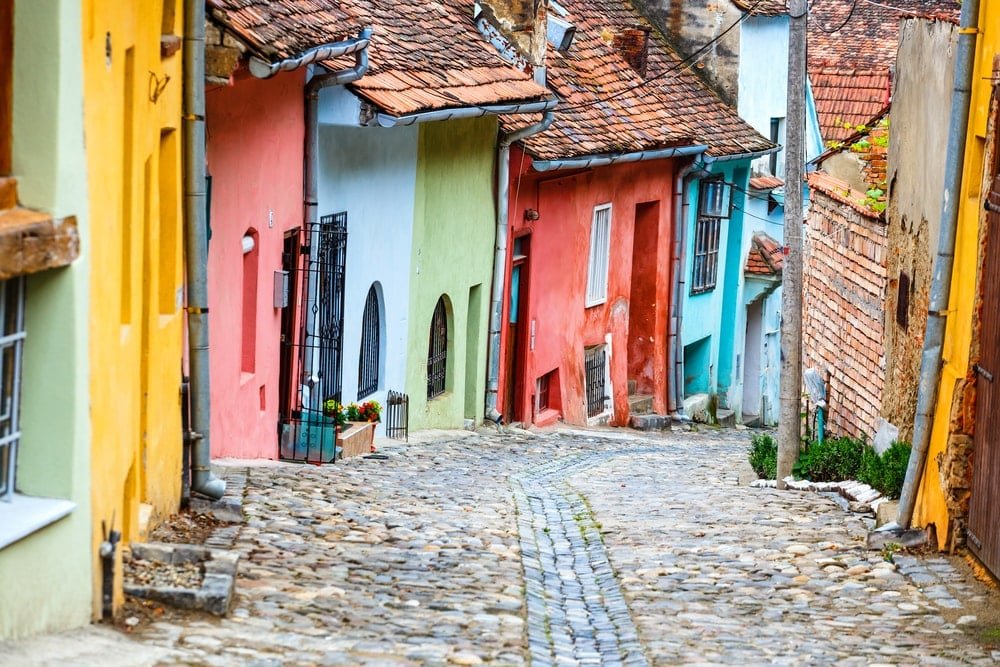
One of Europe’s many gorgeous medieval towns, Sighișoara is one of the top attractions in Romania. Home to no more than 30,000 people, it’s in the famous region of Transylvania. Sighișoara is the birthplace of Vlad III the Impaler, the person on whom Bram Stoker based his famous Dracula novel.
There’s more to Sighișoara and Transylvania than vampirical history, though. More than 800 years old, the town is part of the historic Saxon region, a major cultural center of Transylvanian Saxons. It’s this rich Saxon history that made UNESCO designate Sighișoara as World Heritage in 1999. Nowadays, it’s one of the most fascinating Balkans UNESCO World Heritage Sites, no question.
Although not all that big, Sighișoara has several remarkable sights; outstanding examples are its fortified town walls, several defensive towers, a handful of churches, and more than 150 buildings at least 300 years old. The latter include the Sighișoara City Hall, the Venetian House, the Stag House, and the House of Vlad Dracul (the father of Vlad III the Impaler).
Villages With Fortified Churches In Transylvania
In the heart of Romania, in southeastern Transylvania, you’ll find seven historic villages renowned for their remarkable fortified churches. This area is home to the world’s largest concentration of well-preserved fortified churches dating from the 13th to the 16th centuries. On top of that, the variety in architectural styles of these churches is astounding.
They are dozens upon dozens of these churches located in seven different villages. Founded by the Transylvanian Saxons, they represented a unique land-use system with its specific settlement patterns and centered on family farmsteads.
While the larger towns in the region, such as Sighișoara above, were entirely fortified with town walls and defensive towers, the people living in smaller settlements built fortifications around their churches.
The Romania UNESCO World Heritage Site Villages with Fortified Churches in Transylvania includes the following seven villages: Biertan, Dârjiu, Saschiz, Valea Viilor, Câlnic, Prejmer, and Viscri.
Wooden Churches Of Maramureș

In addition to the fortified Transylvanian churches and mural-covered churches in Moldavia, there’s a third UNESCO World Heritage Site in Romania that protects churches. This one is about an entirely different type of church, though. Situated in northern Transylvania, the wooden churches of Maramureș are a collection of nearly 100 historic churches in various architectural styles and from different historical periods. Eight of them are protected as UNESCO World Heritage in Romania.
Although not often visited by international tourists, Maramureș is still one of Romania’s most well-known regions. This mountainous region in the country’s north is famous for its centuries-old customs and traditions, traditional rural lifestyle, and colorful clothing.
People still live here the way they did hundreds of years ago, making Maramureș essentially a real-life history museum. It’s one of the very few surviving regions that are actually still 100% authentic in Europe, making it one of the “most real” Balkans UNESCO World Heritage Sites. Exploring it is one of the best things to do in Romania.
The eight Wooden Churches of Maramureș are exceptional for their tall and narrow design, shingle cover, slim clock towers, and use of timber instead of stone. While there are dozens of these wooden churches in the Maramureș region, the following eight are designated as World Heritage by UNESCO in Romania:
- Church of the Presentation of the Virgin in the Temple in Bârsana
- Church of St. Nicholas in Budești
- Church of the Holy Parascheva in Desești
- Church of the Nativity of the Virgin in Ieud
- Church of the Archangels Michael and Gabriel in Plopiș
- Church of the Holy Parascheva in Poienile Izei
- Church of the Holy Archangels in Rogoz
- Church of the Archangels Michael and Gabriel in Șurdești
Monastery Of Horezu
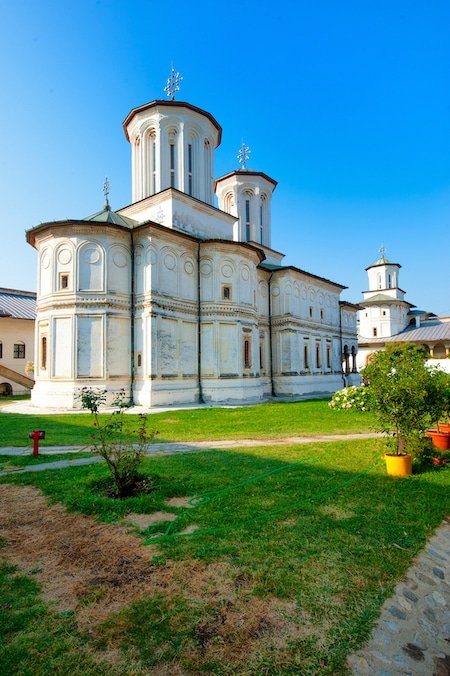
Located in Romania’s Wallachia region, the Horezu Monastery dates from 1690. That’s when Prince Constantine Brancovan founded the monastery, a stunning architectural masterpiece.
This impressive structure is now widely regarded as one of the finest examples of so-called “Brancovan” architecture, which can be considered the only original Romanian architectural style. It symbolizes the way of thinking of a ruler who put art and culture above everything else in a time when major European powers were warring non-stop.
UNESCO declared it World Heritage because of its “architectural purity and balance, the richness of its sculptural detail, the treatment of its religious compositions, its votive portraits and its painted decorative works.” It’s a description that speaks volumes as to the monastery’s unique beauty and cultural significance.
Dacian Fortresses Of The Orăștie Mountains
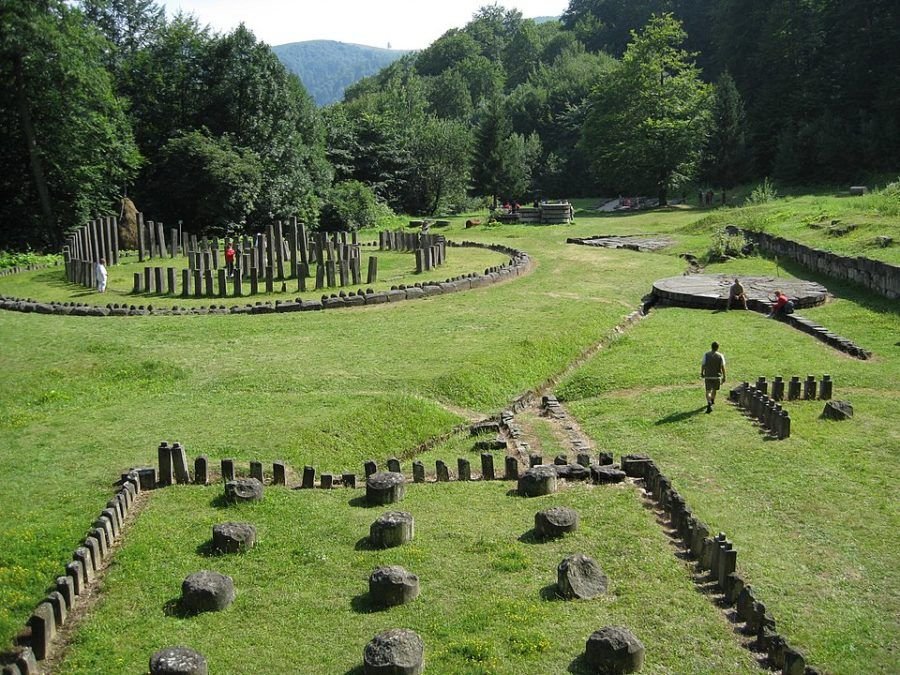
The Dacian Fortresses of the Orăștie Mountains are the oldest of the six cultural UNESCO World Heritage Sites in Romania. They date from the 1st century B.C. to the 1st century A.D. Built by the Dacians to protect them against Rome’s growing power; these six defensive structures feature an extraordinary mix of religious and military architectural styles, both from the late Iron Age and the Classical world.
Although the Romans did conquer them in the 2nd century, they were the very heart of the Dacian Kingdom for many decades. Now wonderfully well-preserved, all six sites offer a unique insight into this ancient civilization’s innovative and resilient nature.
The six Dacian Fortresses of the Orăștie Mountains lie pretty close to one another in the mountainous region of southwest-central Romania. These are the six individual sites:
- Sarmizegetusa Regia
- Bănița
- Piatra Roşie
- Costeşti-Cetăţuie
- Costeşti-Blidaru
- Căpâlna
Danube Delta
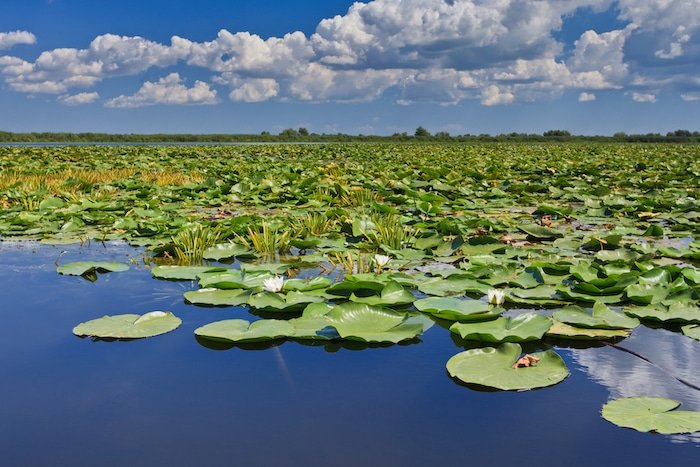
The second-longest river in Europe, the Danube, originates in the Black Forest in Germany, flowing in a more or less southeasterly direction before ending up in the Black Sea. From the Black Forest to the Black Sea, it meanders through no fewer than ten different countries. The Danube Delta is one of the two natural UNESCO World Heritage Sites in Romania, arguably the country’s greatest natural treasure.
It’s Europe’s second-largest river delta and its best-preserved. This vast collection of distributaries, lagoons, wetlands, marshes, and lakes is critical for numerous plants and animals, particularly birds. It’s one of the Seven Natural Wonders of Romania. In addition to being a UNESCO World Heritage Site, the Danube Delta is also a UNESCO Biosphere Reserve.
Churches Of Moldavia
Constructed between the late-1400’s and late-1500’s, the eight Churches of Moldavia are in the far northern corner of Romania, near the border with Ukraine. These historic churches are unique in more than one way.
Besides their beautiful architectural design, they boast remarkable exterior paintings. Stunning frescoes and murals, masterpieces of Byzantine art, cover their external walls and all facades. They’re not just wall decoration, though. They depict complete cycles of religious stories and themes. Additionally, the elegance, colors, and composition of these murals are in total harmony with these churches’ peaceful natural surroundings.
If you’re a fan of art, architecture, culture, and/or history, this is one of the most fascinating Romanian UNESCO World Heritage Sites you can visit. The eight UNESCO-protected Churches of Moldavia are:
- Church of the Assumption of the Virgin of the former Monastery in Humor
- Church of the Annunciation of the Monastery in Vatra Moldoviței
- Church of the Beheading of St. John the Baptist in Arbore
- Church of St. Nicholas and the Catholicon of the Monastery in Probota
- Church of the Holy Rood in Pătrăuți
- Church of the Resurrection of the Monastery in Suceviţa
- Church of St. George of the former Monastery in Voronet
- Church of St. George in Suceava
Ancient And Primeval Beech Forests Of The Carpathians And Other Regions Of Europe
The Ancient and Primeval Beech Forests Site is the only of all Romania UNESCO World Heritage Sites spread out across other countries. This site extends over twelve different European countries, including several other UNESCO World Heritage Sites in the Balkans.
After the last Ice Age ended, the European beech spread across the entire continent from a small number of isolated areas in the Pyrenees, Carpathians, and the Alps, among other mountain ranges. Taken only a few millennia, it’s an unparalleled continent-wide expansion by a plant species, a testimony to the beeches’ tolerance and adaptability.
Romania, as a heavily forested and mountainous country, has no fewer than nine different locations where UNESCO protects the European beech:
- Lotru Mountains
- Țibleș Mountains
- Șinca Secular Forest
- Slătioara Secular Forest
- Cozia Massif
- Domogled-Valea Cernei
- Cheile Nerei-Beușnița
- Izvoarele Nerei
- Strimbu Băiuț
- All About Traveling In The Balkans
- Guide To Backpacking In The Balkans
- Best Beaches In The Balkans
- Top Places To Go Hiking In The Balkans
- One Month Itinerary For Traveling Through The Balkans
- Ultimate 5-Day Balkans Travel Itinerary
- Two Week Road Trip Itinerary Through The Balkans
- Beautiful Lakes In The Balkans
- Balkan Cruises – Where You Can Cruise To In The Balkans
- Southwestern Balkans Road Trip


nice to see it once up on a time i will see it.